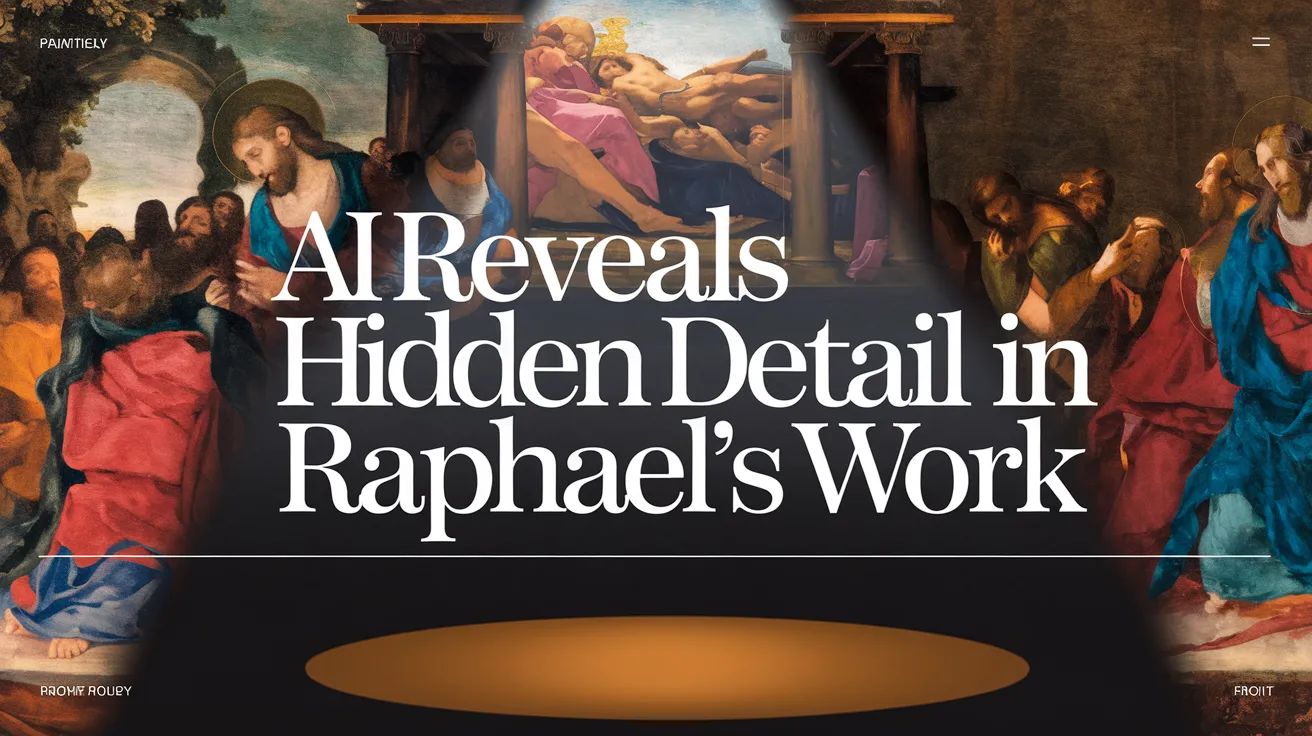AI Reveals Hidden Detail in Raphael’s Work

Artificial intelligence (AI) has demonstrated its capacity to uncover details within artworks that often elude human observers. Recent developments in this domain have led a neural network to identify an intriguing aspect of St. Joseph’s face in Raphael’s painting, Madonna della Rosa: it appears this face was not painted by Raphael himself.
St. Joseph’s depiction, located in the upper left corner of the painting, has long been a topic of scholarly debate concerning the piece’s authenticity as a Raphael original. While determining an artwork’s provenance typically requires conclusive evidence from multiple sources, a new analytical approach incorporating AI has tentatively sided with the notion that some brushstrokes were likely applied by another artist.
Researchers hailing from the UK and US devised a custom analytical algorithm derived from known works attributed to the Italian maestro. Mathematician and computer scientist Hassan Ugail from the University of Bradford elucidated that the technology utilized deep feature analysis to train the AI model to discern Raphael’s distinctive style with remarkable detail, analyzing brushstrokes, the color palette, shading, and much more. “The computer sees far more deeply than the human eye, to microscopic levels,” Ugail stated in 2023.
Traditionally, machine learning models require extensive datasets for training, a challenge in the case of a singular artist’s works. To overcome this, the research team adapted a pre-trained architecture developed by Microsoft known as ResNet50, augmenting it with the traditional support vector machine technique. This method has previously demonstrated an impressive 98% accuracy rate in identifying Raphael’s paintings. For this case, the analysis did not limit itself to the overall picture but also scrutinized individual faces.
While the Madonna, the Child, and St. John were confirmed as Raphael’s creations, the evidence regarding St. Joseph proved different. Notably, previous discussions concerning the painting’s authenticity suggested that St. Joseph’s face appears less refined than the others. Ugail noted, “When we tested the della Rosa as a whole, the results were not conclusive. Then we focused on the individual parts, and while the rest of the painting was confirmed as Raphael, Joseph’s face came up as most likely not Raphael.” It’s hypothesized that Giulio Romano, a pupil of Raphael, may have contributed to the depiction of St. Joseph, although this remains uncertain.
This case illustrates yet another demonstration of how contemporary technology is unveiling the intricacies behind classic paintings—this time through the lens of artificial intelligence. The Madonna della Rosa was painted between 1518 and 1520, and suspicions regarding Raphael’s role in all facets of the artwork arose as early as the mid-1800s. With the new findings supporting previous doubts, the research team cautions that AI is not intended to replace art experts, but rather to serve as a valuable tool in the authentication process.
Ugail remarked, “This is not a case of AI taking people’s jobs. The procedure of authenticating a work of art involves numerous factors, including provenance, pigments, and the condition of the piece. However, such software can be instrumental in assisting the overall assessment.” The research was subsequently published in Heritage Science.